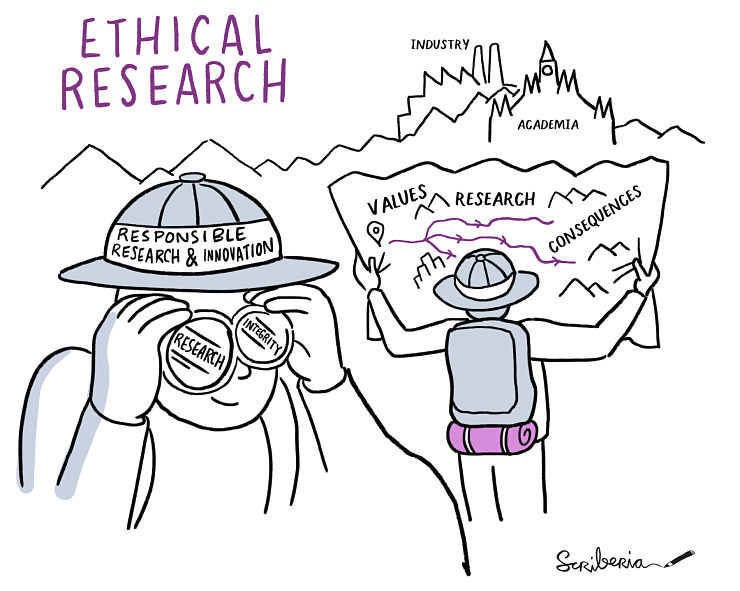Research Value Needs the Help of Social Sciences

Science and technology are valued highly in many societies.

This article by Rachel Ankeny and Lisa Given originally appeared at The Conversation, a Social Science Space partner site, under the title “Creating research value needs more than just science – arts, humanities, social sciences can help”
Globally, discussions of research priorities by governments, universities, and many researchers position science, technology, engineering, mathematics and medicine (STEMM) disciplines at the forefront of innovation and industry engagement.
However, for industries to adopt innovations and for research to have an impact, there must be significant shifts in people’s behaviours, their perceptions, and the ways communities engage with research. These activities are the research focus of the humanities, arts, and social sciences (HASS) disciplines.
Unfortunately, in Australia we continue to see reductions of research funding in these areas.
Here’s why we think that’s a mistake.
More than window dressing
There are few strategies to link STEMM and HASS disciplines in productive ways, and to treat HASS approaches as more than window dressing. For example, the Australian Science and Research Priorities focus on areas that appear to be STEMM-driven, such as soil and water, cybersecurity, environmental change, and health.
HASS approaches are only mentioned in passing. However there was clear recognition (particularly by industry representatives) of the importance of HASS approaches when the priorities were discussed in early 2015. For instance, one of us (Rachel) heard one participant in the expert working group sessions note that:
understanding cybersecurity is not primarily a technological issue; the difficulties lie in human and social behaviours associated with cyber activities.
The national Industry Growth Centres also emphasise STEMM, leaving little room for HASS disciplines to use their competitive strengths within the national priorities.
Multiple actors
In contrast, the 2016 report on Technology and Australia’s Future noted that:
Technology creation and use requires multiple actors: designers, makers, users, scientists, marketers, policymakers and enablers. Australia’s education systems must both encourage high levels of scientific and technology literacy and inculcate creativity. Creativity encourages experimentation, giving people, communities and companies the necessary confidence to innovate.
Without HASS, how can Australia position itself for economic, cultural, business, and social successes in the technologically advanced future our children will inherit? It is in the HASS disciplines that designers, makers, policymakers, and enablers sit.
Without a strong interdisciplinary approach to tomorrow’s problems, the STEMM disciplines risk not realising their full potential for research translation and adoption, and for change for the betterment of society.
Mobilizing value
In comparison to Australia, Canada will invest C$925 million over the next five years not only in science and health, but also in HASS research. The Canadian budget also includes C$275 million for interdisciplinary and high-risk research to be administered by the Social Sciences and Humanities Research Council (SSHRC).
Along with Canada’s health and science-based funding agencies, SSHRC provides special funding schemes to support STEMM and HASS interdisciplinary work. These initiatives not only provide strategic funding to support top researchers, but attest to the value of the HASS disciplines in full partnership with STEMM.
These initiatives are part of Canada’s focus on mobilising the value of science and technology, which the government recognises cannot succeed without a simultaneous and clear focus on the human, cultural, and creative aspects of modern society.
Projects in Australia
Exciting STEMM-HASS interdisciplinary projects are already being developed here in Australia. One of us (Lisa) has a current project exploring research adoption in the wine industry and that brings wine scientists and industry partners together with information science.
The focus is on qualitative, social research to understand how scientists can best communicate with industry. This will ensure the newest innovations in wine science can be more easily adopted, and that winemakers can share their research needs with scientists.
Wine brings huge value to the Australian economy. So ensuring that winemakers have access to the latest research innovations, and that wine scientists can help the industry adopt changes, are critical issues requiring social science methods to ensure innovations are taken up.
Another of us (Rachel) has a project that brings together social scientists, humanities scholars and animal welfare scientists together with industry partners, to explore public and producer values related to animal welfare in the red meat industry.
Given current debates over meat production and threats to agriculture’s social license to operate, determining what underlying values are shared across various sectors of society is critical both to policymaking and self-regulation, and to future directions in the industry.
From Shakespeare to diseases
Research applications come out of the most unusual places.
In 2013 a collaboration between a linguist and a bioinfometrician resulted in supercomputing techniques to determine whether an unknown play was written by Shakespeare. The findings of this work were redeployed to diagnose cancer using biological markers to pinpoint a molecular signature for particular diseases. This research approach has been used in various biomedical, literature, linguistic, and social behavioural studies, including one that produced a tree showing relationships between 84 Indo-European languages, and the classification of several different cancer cell lines.
The so-called “wicked problems” related to health, the environment, climate change, among others, continue to plague our world.
Yet, we are failing to fully integrate the scientific aspects of these issues with how people actually operate in and think about the real world: HASS can help.


















































































